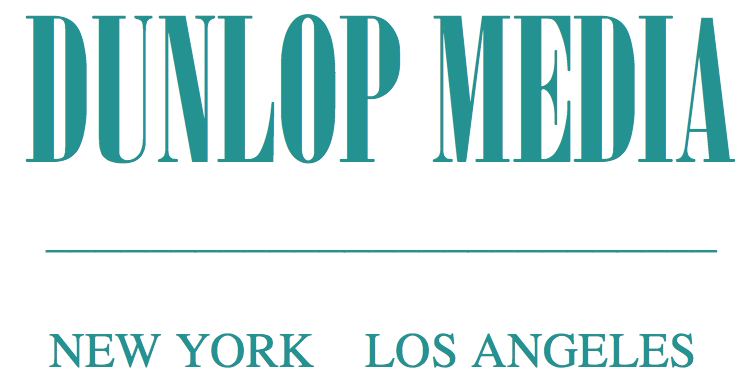How “Fear of Missing Out” can set up the media to be fooled - and it's easier than you think
Media commentary by Steve Dunlop
In our last post, we discussed how mainstream media are becoming part of the problem in distinguishing fact from fiction – passing on erroneous, unchecked online information without verifying it first.
But there’s another way in which the media hang their credibility out to dry - and they have no one to blame but themselves. The fourth estate, unfortunately, has a little understood softness in the underbelly that I like to refer to as FOMO: Fear Of Missing Out.
Long before the Internet, groups of journalists working the same story could demonstrate a pack mentality. We pile on a simple, entertaining story that grabs our attention. And because we all see our competitors going after it, the effect multiplies. We don’t want to be stuck in the desert without it. Lulled by the same set of questionable facts, we drop our collective guard.
FOMO thus leaves us all vulnerable to a well-timed, professional hoax. I know.
"Charlie Taylor" at the famous lottery hoax party, 1990. Image from WNYW/New York.
When I was a TV news anchor, the Associated Press and several New York stations – including mine (WNYW Channel 5) – reported on a suburban woman who identified herself as 30-year old Charlie Taylor, who claimed to have hit the $35 million jackpot in the New York State Lottery. At that time, it was the largest such payout to date.
We knew our competitors were reporting the story. And why shouldn't they? Taylor had what looked like a photocopy of the winning ticket. She booked a suite at the Park Central Hotel. She poured champagne for her friends, handed out $10 bills to passers-by, and produced a “pool video” of the revelers at her celebratory bash, which we played back on air. The following morning, the New York Times, the New York Post, and Newsday all joined us with their own versions of the story.
Steve Dunlop (left) and co-anchor Rosanna Scotto interviewing "Charlie Taylor" via phone, perhaps not quite making sense of her claim. Image from WNYW/New York.
But every single one of us was lied to. “We were had,” said the Post’s editor, Jerry Nachman.
All of us had shared a basic assumption – that the lottery story was true. And once we saw the photocopy of the ticket, that’s not an unreasonable position.
“It would not be possible to live in a community if the general expectation is that people deceive without reason,” writes Christopher H. Sterling in the Encyclopedia of Journalism (Sage Publications, 2009). “Deception is successful because people assume that others are generally truthful.”
Of course, people have a variety of motivations to lie – especially to reporters, and even if only for sport. But even FOMO can't explain how so many of us fell victim to the same lie, all at once. How did that happen?
We later learned the lottery hoax was orchestrated by a professional: Alan Abel, a self-styled media prankster who had a track record of pulling similar stunts dating back to the Tonight Show of the 1950’s.
In retrospect, it's easy to see how Abel laid his lottery media trap:
A copy of the so-called winning ticket.
· Fake the evidence. For starters, you create a copy of the “winning ticket” with a copying machine. You doctor the numbers to match the announced winners, then wrinkle and fold the copy as though a number of people have examined it for authenticity. You explain that the original is Iocked in a safe. Makes perfect sense.
· Pick a weekend. Pull the hoax on a slow Sunday evening. Not only would there be little else happening news-wise, but newsrooms be operating with a barebones staff. State lottery offices would be closed, and even journalists who were inclined to verify the ticket would be unable to reach the right people.
· Hire your friends. At the Park Central, Abel enlisted seven friends to play the partygoers. He brought in an actress to play “Charlie Taylor,” made sure she was attractive, and told her to tell the media she was single. (So she’s rich, pretty – and available?)
· Get it on the wires. Abel’s coup-de-grace was planting the story with the Associated Press first. Even though we all supposedly know not to trust something just because it runs “on the wires,” it nevertheless gains third party credibility inside newsrooms, and thus, the benefit of the doubt.
There was one moment when Abel’s stunt came close to being exposed. It was in how he prepped Charlie Taylor for the inevitable question of how she picked the winning combination.
“I dreamed that Malcolm Forbes and Donald Trump were circling me on magic carpets, spewing out the numbers to me,” she said.
That answer brings to mind another acronym: YGBFKM. It should have been a warning sign. But because of FOMO, no reporter had the presence of mind to remember an admonition we’ve heard countless times over the years: “If your mother says she loves you, check it out.”
A footnote to journalists, and everyone else for that matter: at age 85, Alan Abel is still in business. “Alan continues to poke fun at the media's complicity, its fallibility and a reporter's all-too-often blind rush to scoop a salacious story,” his web site states.
Could Alan Abel do it again today? YGBFKM. Of course he could - especially since a new generation of reporters might never have heard of him.
But as one visit to snopes.com attests, the difference now is it doesn’t take a mischievous professional to fool millions of people at once.





